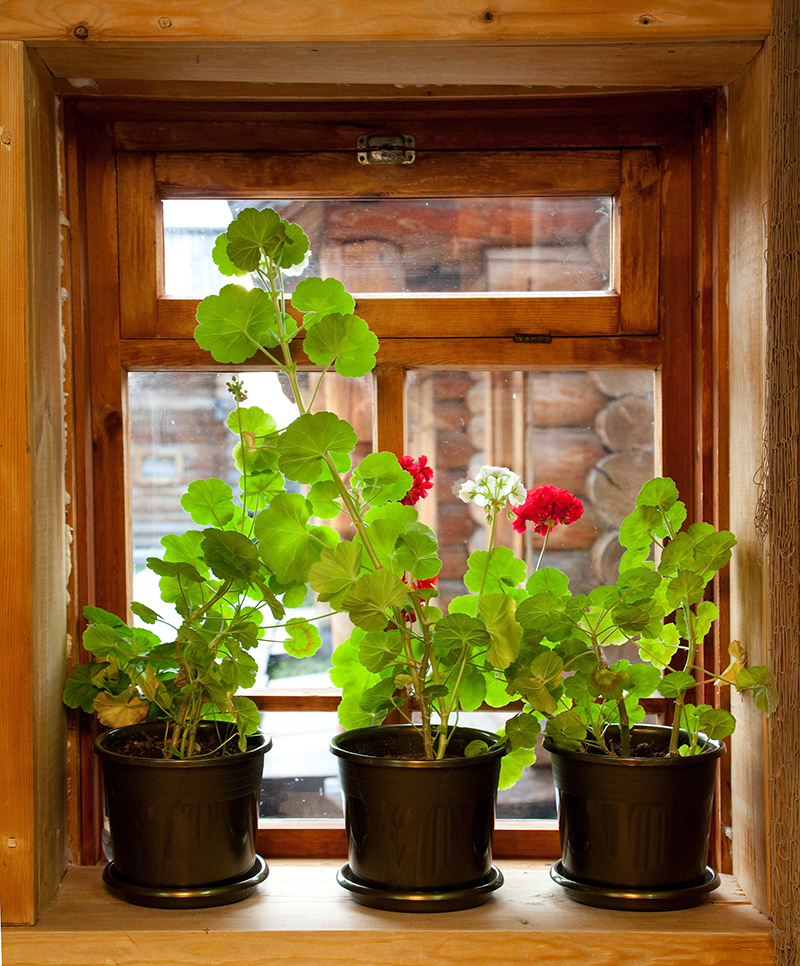Orchid Care: From Novice to Expert
Posted on 02/06/2025
Orchid Care: From Novice to Expert
Orchids are among the most enchanting and diverse plants in the world, captivating gardeners from all walks of life. Whether you are a budding enthusiast or seeking to refine your expertise, this comprehensive guide will help you master the art of orchid care. By following these carefully curated tips and insights, you can journey from an absolute beginner to a true orchid aficionado. Learn everything you need to know about nurturing these stunning flowers and enjoy healthy, thriving orchids year-round.

Understanding Orchids: An Introduction
What Are Orchids?
Orchids belong to the family Orchidaceae, one of the largest flowering plant families on Earth, boasting over 25,000 species and countless hybrids. Orchids are renowned for their exotic blooms, unique shapes, and vibrant colors, making them favorite houseplants and prized collections for many gardeners.
Why Do People Love Orchids?
- Exotic beauty: Orchids come in a wide range of colors, shapes, and sizes.
- Longevity: Their blooms often last for weeks or even months.
- Variety: There is an orchid species for every preference and environment, from tiny miniatures to large, showy hybrids.
- Challenge: Nurturing orchids offers a rewarding gardening journey with stunning results.
Getting Started With Orchid Care
Choosing the Right Orchid
As a beginner, it's best to start with easy-to-grow orchids, such as:
- Phalaenopsis (Moth Orchid): Ideal for indoor conditions; blooms last for months.
- Dendrobium: Robust and forgiving; produces multiple sprays of flowers.
- Cattleya: Known for their large, fragrant blooms; moderately easy to care for.
- Oncidium: Recognized by their "dancing lady" flowers and resilience.
Orchid Potting Media and Containers
Orchids require specialized potting media rather than traditional soil. Choose from the following media:
- Bark chips: Provide excellent aeration and drainage.
- Sphagnum moss: Retains moisture; suitable for young plants or those in dry environments.
- Leca pellets or perlite: Promotes root aeration and prevents compaction.
Ensure your orchid pot has multiple drainage holes to prevent root rot and allow for healthy root growth. Transparent pots can help monitor root health and moisture levels.
The Fundamental Elements of Growing Orchids
Lighting Needs for Orchids
- Indirect sunlight: Most orchid varieties thrive in filtered or indirect light. Phalaenopsis orchids enjoy east or west-facing windows.
- Monitor leaf color: Healthy orchid leaves should appear vibrant green. Dark leaves may indicate insufficient light, while yellowing or reddish tints suggest too much direct sun.
- Artificial lighting: For windowless rooms, use fluorescent or LED grow lights placed about a foot above the plants.
Proper Watering Techniques
- Under-watering vs. Over-watering: Orchids are susceptible to root rot in soggy media, but underwatering can hinder growth and flowering.
- The "Soak and Dry" Method: Water orchids thoroughly, allowing water to drain completely, then wait for the potting media to dry before the next watering.
- Frequency: Typically, once a week for most orchids. Adjust according to humidity, temperature, and pot size.
- Humidity trays: Placing orchids on a tray filled with pebbles and water can improve humidity levels without soaking the roots.
Nutrient Requirements
While orchids are light feeders, they do require consistent fertilization for healthy growth.
- Balanced fertilizer: Use a water-soluble fertilizer labeled "weakly, weekly." Dilute fertilizer to quarter strength and apply during active growth periods.
- Flush with clear water: Once a month, flush the potting media to prevent salt buildup.
- Bloom-boosting fertilizers: Use a high-phosphorus formula to encourage prolific flowering during bloom seasons.
Ideal Temperature and Humidity
- Daytime temperatures: 65-80?F (18-27?C).
- Nighttime temperatures: 55-65?F (13-18?C).
- Humidity: Most orchids thrive at 40-60%. Use humidifiers or misting techniques in drier climates.
- Air circulation: Ensure gentle airflow to prevent fungal diseases and promote healthy growth.
Orchid Maintenance for Ongoing Health
Repotting Orchids
Repotting is vital for orchid plant care, particularly when the potting mix starts breaking down or roots begin to crowd the pot. Follow these steps:
- Repot every 1-2 years or when roots outgrow the container.
- Choose a slightly larger pot with good drainage.
- Trim dead or shriveled roots using sterile scissors.
- Replace old potting media with fresh bark or moss.
- Water lightly after repotting and keep in shaded conditions for a week.
Pruning and Cleaning
- Remove spent blooms by snipping flower spikes an inch above the node or stem base.
- Clip dead or yellow leaves to focus energy on healthy growth.
- Wipe leaves gently with a damp cloth to remove dust and prevent pest infestations.
Disease and Pest Control
- Common pests: Look out for spider mites, aphids, mealybugs, and scale insects.
- Natural remedies: Use insecticidal soap, neem oil, or horticultural oil for mild infestations.
- Fungal and bacterial diseases: Avoid overhead watering and keep leaves dry to prevent rot. Remove affected plant material promptly.
- Quarantine: Isolate affected orchids to prevent spreading issues to other plants.
Blooming Orchids: Tips for Success
Understanding Orchid Flowering Cycles
Many beginners wonder how to make orchids bloom. The secret lies in replicating nature's light, temperature, and feeding patterns as closely as possible. Different orchids bloom at varied times, ranging from once a year to multiple flushes.
- Phalaenopsis: Usually blooms once a year but can rebloom on old spikes.
- Dendrobium: Provides multiple clusters of flowers throughout its season.
- Oncidium: Produces sprays of flowers, especially when mature and well-fed.
Encouraging Re-blooming
- Temperature drop: Cool night temperatures (about 10?F lower than daytime) can trigger flower spikes in many species.
- Lighting: Ensure adequate light during the day, but avoid harsh, direct sun.
- Rest period: Some orchids, like Dendrobium, benefit from a dry rest after blooming to initiate new flower spikes.
- Pruning spikes: With Phalaenopsis, cut just above a healthy node for a chance of side spikes and additional blooms.
Moving From Novice to Advanced Orchid Care
Experiment with More Challenging Orchids
Once you master easy species, try cultivating challenging varieties such as:
- Paphiopedilum (Lady Slipper Orchid): Prefers low light and needs constant but light moisture.
- Miltoniopsis (Pansy Orchid): Demands cooler temperatures and high humidity.
- Vanda: Requires bright light, daily watering, and high humidity.
- Masdevallia: Enjoys cool, damp, and humid conditions with excellent airflow.
Orchid Propagation Techniques
- Keiki propagation: Some orchids, especially Phalaenopsis and Dendrobium, produce offshoots ("keikis") that can be removed and potted separately once they grow roots.
- Division: Mature orchids with multiple growths (like Cattleyas and Oncidiums) can be split during repotting to create new plants.
- Seed propagation: For the true expert, flasking orchid seeds is possible but requires sterile, laboratory-like conditions.
Advanced Orchid Arrangements and Mounting
Beyond pots, advanced orchidists may mount orchids on cork bark, tree fern slabs, or driftwood to mimic their natural growing conditions. This method is ideal for species where roots need to dry quickly but it requires a consistent humidity and strict watering regime.
Troubleshooting Common Orchid Problems
Yellow Leaves and Other Warning Signs
- Overwatering: The most common reason for yellow leaves and mushy roots.
- Insufficient light: Causes limp, dark green foliage.
- Nutrient deficiencies: Stunted growth or leaf discoloration.
- Pest infestations: Sticky leaves, webbing, or white residue signal trouble.
Prompt action can save your plant from further harm. Review your environment and adjust watering, lighting, or fertilization as needed.
How to Revive Struggling Orchids
- Check roots: Carefully remove the orchid from its pot. Healthy roots are firm and green or white; rotting roots are brown and mushy.
- Prune damaged areas: Trim away dead roots and leaves with sterilized scissors.
- Refresh the medium: Replace with new, well-draining orchid bark or sphagnum moss.
- Reduce stress: Avoid repotting when orchids are in bloom unless urgently needed.
Frequently Asked Questions About Orchid Care
- How often should I water my orchid? Once a week is typical, but this can vary with environment and pot type.
- Why isn't my orchid blooming? Check light, temperature, and feeding. Many need a temperature drop or more light to initiate blooms.
- Can I use regular potting soil? No. Regular soil retains moisture and suffocates roots. Use a specialized orchid mix.
- My orchid has aerial roots--should I cut them? No. Leave them; aerial roots absorb moisture from the air.
- Do orchids need to be fertilized? Yes, but sparingly. Use diluted orchid fertilizer every couple of weeks during the growing season.

Enriching Your Orchid Hobby: Community and Learning
Becoming an orchid care expert is a journey. Join orchid societies, online forums, and visit local greenhouses to enhance your knowledge. Many orchid societies offer lectures, shows, and hands-on sessions that can further develop your skills.
Useful Resources to Elevate Your Orchid Care Journey
- American Orchid Society (AOS): Offers comprehensive guides, webinars, and community support.
- Orchid forums: Connect with other orchid aficionados and share tips and photos.
- Gardening apps: Track watering, fertilizing, and blooming schedules for your collection.
Conclusion: Orchid Care Mastery
Orchid care is both an art and a science, evolving as your experience and plant collection grow. With patience, observation, and dedication, you can transform from a novice grower to an expert orchid cultivator. Delight in the beauty and diversity of these extraordinary plants, and take pride as your orchids flourish under your green thumb.
Remember, each orchid species has unique needs, so continual learning and experimentation are the keys to successful orchid care. Share your progress, explore new varieties, and nurture your passion for a lifetime of stunning blooms!





